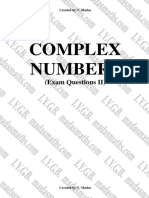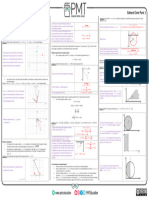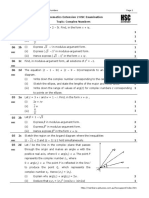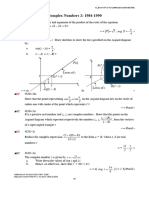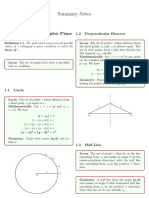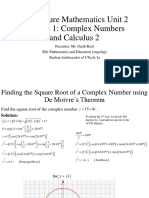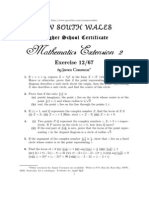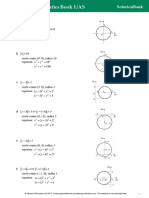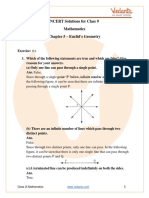0% found this document useful (0 votes)
159 views3 pagesLocus of A Complex Number
The document discusses the concept of loci of complex numbers in the Argand diagram, detailing various conditions that define these loci, such as circles, perpendicular bisectors, half-lines, and intersecting loci. It includes specific questions that require describing and sketching these loci based on given conditions. Additionally, it addresses the Cartesian form of loci and provides examples to illustrate the concepts.
Uploaded by
TashariCopyright
© © All Rights Reserved
We take content rights seriously. If you suspect this is your content, claim it here.
Available Formats
Download as PDF, TXT or read online on Scribd
0% found this document useful (0 votes)
159 views3 pagesLocus of A Complex Number
The document discusses the concept of loci of complex numbers in the Argand diagram, detailing various conditions that define these loci, such as circles, perpendicular bisectors, half-lines, and intersecting loci. It includes specific questions that require describing and sketching these loci based on given conditions. Additionally, it addresses the Cartesian form of loci and provides examples to illustrate the concepts.
Uploaded by
TashariCopyright
© © All Rights Reserved
We take content rights seriously. If you suspect this is your content, claim it here.
Available Formats
Download as PDF, TXT or read online on Scribd
/ 3










